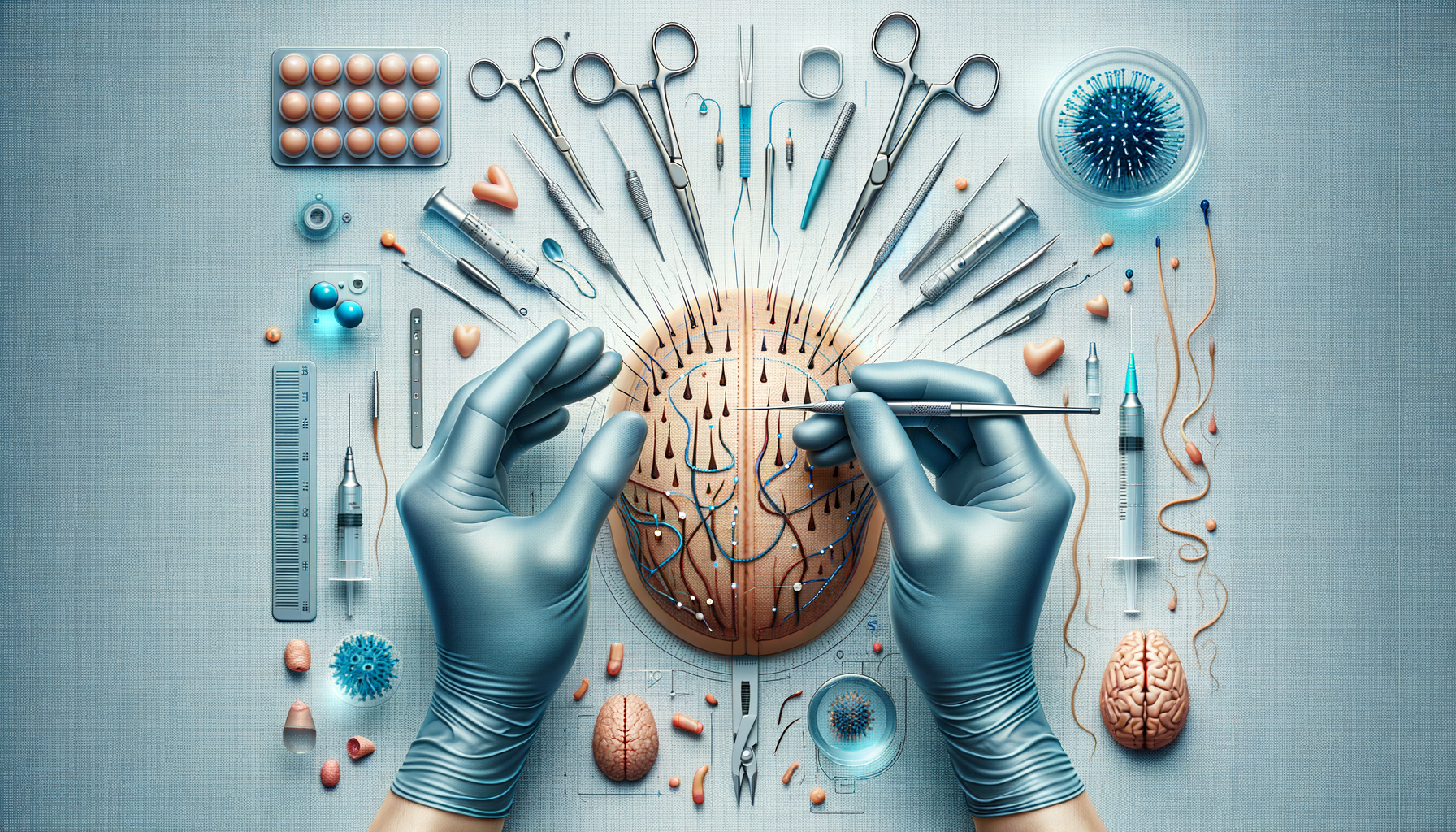
Achieve Natural-Looking Hair Restoration – UAE!
The Science Behind Hair Transplantation
Hair transplantation is a medical procedure that involves moving hair follicles from a part of the body, known as the ‘donor site’, to a bald or balding part of the body known as the ‘recipient site’. It is primarily used to treat male pattern baldness. In this minimally invasive procedure, grafts containing hair follicles that are genetically resistant to balding are transplanted to the bald scalp.
The most common techniques are Follicular Unit Transplantation (FUT) and Follicular Unit Extraction (FUE). FUT involves removing a strip of skin from the donor area, from which individual follicular units are dissected and implanted into the recipient area. On the other hand, FUE involves extracting individual follicular units directly from the scalp and implanting them into the bald area. Both methods have their advantages and considerations:
- FUT may leave a linear scar, but it is often faster and can yield more grafts in a single session.
- FUE leaves tiny, dot-like scars and may be preferable for those who wish to wear their hair short.
Advancements in technology have significantly improved the outcomes of hair transplants, making them a reliable option for many. The use of robotic systems and improved surgical techniques have enhanced precision and reduced recovery time, contributing to the growing popularity of hair transplants in the UAE.
Why Hair Transplants Are Gaining Popularity in the UAE
The UAE has become a hub for cosmetic procedures, and hair transplantation is no exception. Several factors contribute to its growing popularity in the region. Firstly, the increasing awareness and acceptance of cosmetic procedures have encouraged more individuals to seek solutions for hair loss. This is coupled with the high success rates and natural-looking results that modern hair transplants offer.
Moreover, the UAE’s strategic location and world-class healthcare facilities attract patients from neighboring countries. The availability of skilled surgeons and advanced medical technology makes the UAE an attractive destination for those seeking hair restoration treatments. Additionally, cultural factors play a role, as a full head of hair is often associated with youth and vitality in many societies, including the UAE.
Another significant factor is the influence of social media and celebrity endorsements, which have demystified the procedure and showcased its effectiveness. As more public figures openly discuss their hair restoration experiences, the stigma surrounding hair loss treatments continues to diminish, encouraging more people to consider this option.
What to Expect from a Hair Transplant Procedure
Undergoing a hair transplant is a significant decision, and understanding what to expect can help ease any apprehensions. The process begins with a consultation where the surgeon evaluates the patient’s hair loss pattern, discusses goals, and determines the most suitable technique. This personalized approach ensures that each patient receives a treatment plan tailored to their specific needs.
The procedure itself is typically performed under local anesthesia, allowing the patient to remain awake and comfortable. Depending on the extent of the transplant, the process can take several hours. Patients may experience mild discomfort, but this is generally manageable with prescribed medication.
Post-procedure, patients are given detailed aftercare instructions to facilitate healing and optimize results. Swelling and redness in the recipient area are common but usually subside within a few days. New hair growth typically begins within three to four months, with full results visible at around a year.
It’s important to have realistic expectations and understand that results can vary based on individual factors such as hair type, age, and the extent of hair loss. However, with advancements in techniques and technology, hair transplants offer a promising solution for many seeking to restore their hair and confidence.


